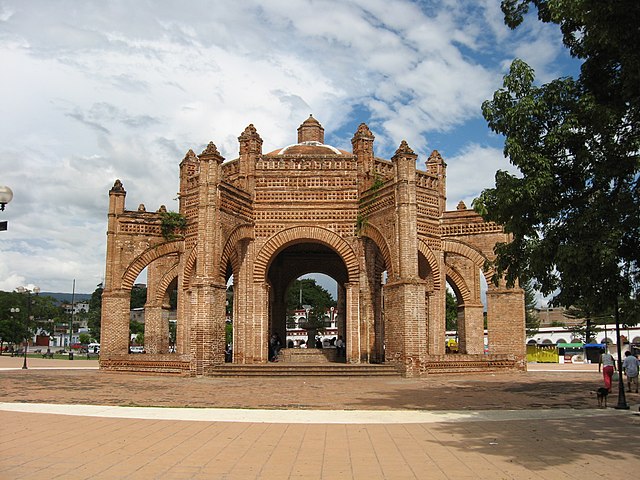Bonampak is an ancient Maya archaeological site in the Mexican state of Chiapas. The site is approximately 30 km (19 mi) south of the larger site of the people Yaxchilan, under which Bonampak was a dependency, and the border with Guatemala. While the site is not overly spatial or abundant in architectural size, it is well known for the murals located within the three roomed Structure 1. The construction of the site's structures dates to the Late Classic period. The Bonampak murals are noteworthy for being among the best-preserved Maya murals.
Bonampak
Musicians on lower register of the east wall of Room 1.
Lintel 1 over doorway to Room 1. This lintel depicts Yajaw Chaan Muwan, ruler of Bonampak, capturing an enemy on January 12, A.D. 787 (Longcount date: 9.17.16.3.12, 8 Eb 10 K’umk’u).
Upper register of the east wall in Room 3 featuring Bonampak noble women engaged in ritual bloodletting. Immediately above, in the vault, is a supernatural entity spewing blood.
Chiapas, officially the Free and Sovereign State of Chiapas, is one of the states that make up the 32 federal entities of Mexico. It comprises 124 municipalities as of September 2017 and its capital and largest city is Tuxtla Gutiérrez. Other important population centers in Chiapas include Ocosingo, Tapachula, San Cristóbal de las Casas, Comitán, and Arriaga. Chiapas is the southernmost state in Mexico, and it borders the states of Oaxaca to the west, Veracruz to the northwest, and Tabasco to the north, and the Petén, Quiché, Huehuetenango, and San Marcos departments of Guatemala to the east and southeast. Chiapas has a significant coastline on the Pacific Ocean to the southwest.
Jaguar sculpture from Cintalapa dating between 1000 and 400 BCE on display at the Regional Museum of Anthropology and History of Chiapas.
The Palace at Palenque
The Royal Crown centered in the main plaza of Chiapa de Corzo built in 1562.
Remnants of frescos at the Saint Mark Cathedral of Tuxtla Gutiérrez








